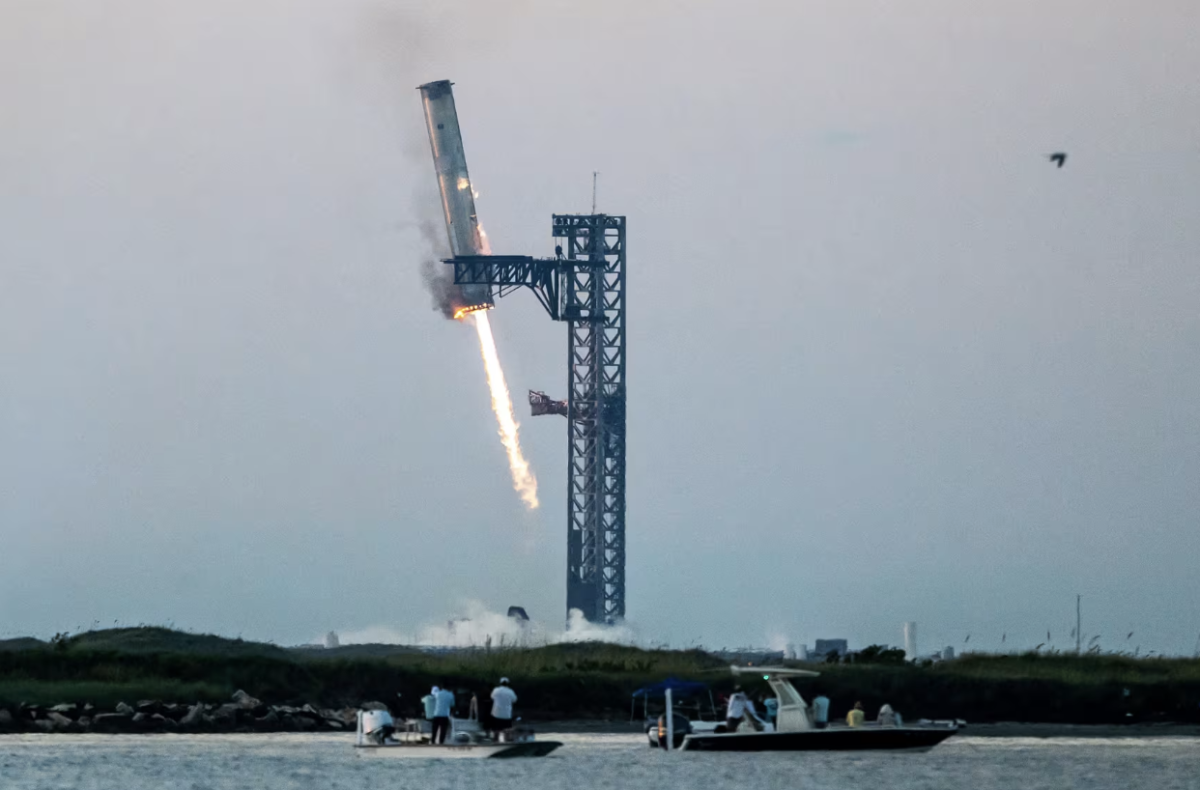SpaceX’s latest breakthrough on Oct. 13 marked a significant day in history for aerospace enthusiasts. SpaceX, an aerospace company owned by Elon Musk, successfully caught the booster from the bottom part of the Starship rocket into a pair of large metal robotic arms. The upper ship of the rocket effectively landed in the Indian Ocean forty minutes later.
This remarkable event was an unprecedented feat; it was listed as the first time in aerospace history that a launched rocket could be reused, making SpaceX the first company to ever do so.
The catch of the rocket received immense praise as it can bring massive benefits to the future of space engineering. With the advent of reusable rockets becoming a reality, it significantly reduces the cost of each rocket launch.
Previously, all rocket launches had been a one-way delivery: once fired, they were disassembled in outer space, never to be recovered back again. This caused rocket launches to be financially burdensome; however, with recyclable rockets available now, this feat made it possible for much cheaper launches.
“Reusable rocket boosters used to be a topic shrouded in controversy due to their double-edged nature,” Geunhyung Hong (11), avid fan of aerospace engineering, said. “While it promised huge cost savings in the unit cost of launches, many of its advantages were compromised by increased maintenance costs, safety concerns, and added system complexity. … However, SpaceX was able to effectively do away with all of its shortcomings by designing a launch system capable of landing without severely damaging itself. Overall, I feel reusable rockets will greatly contribute to the reduction of rocket launch costs.”
People all around the world recognize the benefits this new achievement brings to the aerospace industry. With the boundless possibilities this new milestone opens up for the future of aerospace projects, people will have to tune in to watch the true potential of this accomplishment.


